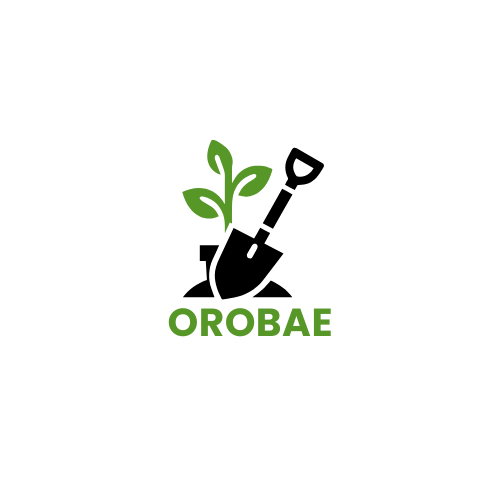Gardening isn’t just a hobby; it’s a chance to unleash creativity while getting a little dirt under the nails. Whether you’re a seasoned green thumb or a newbie looking to avoid a plant graveyard, knowing the right essentials can make all the difference. Imagine transforming your backyard into a flourishing paradise instead of a patch of weeds that could host a horror movie.
Gardening Essentials
Gardening tools remain fundamental for maintaining plants and soil. Key items include a quality trowel, pruning shears, and a hand rake. These essentials support various tasks like digging, trimming, and aerating soil.
Soil amendments play a crucial role in providing nutrients. Organic options such as compost and aged manure enrich the soil. Using these amendments promotes healthy plant growth and improves soil structure.
Plant selection impacts garden success. Choosing plants suited to the climate and soil type increases the chances of thriving greenery. Native plants often require less water and care, making them ideal for beginners.
Pest control methods ensure a healthy garden. Integrated pest management strategies combine cultural, mechanical, and biological controls to minimize harm. Natural remedies like neem oil help maintain plant health without chemical exposure.
Watering techniques contribute to garden vitality. Drip irrigation systems deliver moisture directly to roots, reducing waste. Adjusting watering schedules based on seasonal needs supports optimal hydration.
Mulching helps retain soil moisture and suppress weeds. Organic materials like wood chips or straw create a barrier around plants. Applying mulch prevents erosion and stabilizes soil temperature.
Garden planning enhances efficiency. Creating a layout that maximizes sunlight and airflow increases plant productivity. Categorizing plants based on height and spacing allows for better growth alignment.
Regular maintenance keeps gardens flourishing. Tasks like weeding, deadheading, and inspecting plants for disease prevent issues from escalating. Following a consistent schedule leads to a vibrant garden throughout the growing seasons.
Essential Tools for Gardening

Gardening requires the right tools to achieve successful results. Essential tools enhance efficiency and improve the gardening experience.
Hand Tools
Hand tools include trowels, pruners, and hand rakes. Trowels assist in digging small holes for planting, while pruners enable precise trimming of plants. Weeding is easier with hand rakes that help to remove debris from garden beds. Garden forks facilitate breaking up compacted soil, improving aeration. Gloved hands protect against thorns and insect bites during handling. These tools provide gardeners with the control needed for intricate tasks.
Power Tools
Power tools, such as tillers and hedge trimmers, simplify larger gardening jobs. Tillers aerate soil and help with preparing garden beds quickly. Hedge trimmers shape and maintain shrubs, ensuring a neat appearance. Leaf blowers make cleaning up fallen leaves efficient, saving time. String trimmers tackle tall grass and weeds in hard-to-reach areas. Each tool increases productivity, allowing gardeners to manage their spaces effectively.
Soil and Fertilizers
Soil and fertilizers serve as the foundation for any thriving garden. Understanding their types and options is essential for successful growth.
Types of Soil
Gardeners encounter various soil types, each supporting unique plant needs. Clay soil holds moisture well but drains poorly, leading to root issues. Sandy soil offers excellent drainage but lacks nutrients. Loamy soil combines clay, sand, and silt, providing the ideal balance of drainage and nutrients, making it preferable for most gardening tasks. Gardeners can also consider soil amendments like compost or peat moss to enhance structure and fertility. Maintaining proper pH levels ensures optimal nutrient availability, allowing plants to flourish.
Fertilizer Options
Fertilizers vary, catering to different plants and their requirements. Organic fertilizers, such as compost and manure, release nutrients gradually, promoting healthy soil microbiomes. Synthetic fertilizers offer immediate nutrient availability, allowing for rapid plant growth. Liquid fertilizers provide fast-acting support, useful for container gardens. Slow-release options deliver nutrients over time, reducing the need for frequent applications. It’s crucial to match fertilizers with specific plant needs and growth stages for effective nourishment. Proper application methods enhance efficiency while preventing nutrient runoff, ensuring sustainability in gardening practices.
Plants and Seeds
Selecting the right plants and seeds forms the backbone of any successful garden. Understanding local climate and soil types guides choices significantly. Native plants often thrive with less maintenance, making them ideal for gardeners. Additionally, considering growth habits and environmental conditions helps in curating a diverse and flourishing space.
Choosing the Right Plants
Choosing plants suited for specific locations is crucial. He or she should consider sun exposure and moisture levels in the garden. Opt for drought-tolerant varieties in dry areas. In rainy climates, native plants that resist flooding prove beneficial. Seasonal flowers can provide continuous blooms throughout the year, enhancing visual appeal. Creating harmony among plant types ensures a vibrant ecosystem that attracts beneficial insects and pollinators.
Seed Starting Tips
Seed starting requires careful attention to detail. Prepare seed trays with high-quality potting mix to ensure healthy growth. Maintaining appropriate moisture levels is vital; avoid overwatering. Temperature control plays an essential role in seed germination, with warmth speeding up the process. He or she can use grow lights to supplement natural sunlight during cloudy days or early spring. Transplanting young seedlings into larger containers allows them to develop stronger root systems before moving outdoors.
Watering and Irrigation
Watering and irrigation are vital for maintaining a healthy garden. Proper techniques ensure plants receive the right amount of moisture, promoting robust growth.
Manual Watering Techniques
Manual watering offers flexibility and control. Gardeners can adjust the amount of water based on individual plant needs. Using a hose or watering can makes it possible to target specific areas. Consider early morning or late evening for watering, as these times reduce evaporation and allow plants to absorb moisture effectively. In addition, a gentle spray helps prevent soil erosion. Employing soaker hoses can also facilitate deeper soil penetration, ensuring roots access ample water.
Drip Irrigation Systems
Drip irrigation systems provide an efficient solution for watering gardens. These systems deliver water directly to plant roots, minimizing waste and reducing evaporation. Gardeners can easily customize these systems to fit specific garden layouts. Optimal for both garden beds and potted plants, drip irrigation ensures consistent moisture levels. Timers can automate watering schedules, relieving the burden on gardeners. Additionally, these systems limit weed growth by delivering water only to desired plants, enhancing overall garden health.
Conclusion
Gardening is more than just a hobby; it’s a rewarding journey that fosters creativity and a deeper connection with nature. By equipping oneself with the right tools and knowledge about soil, plant selection, and maintenance, anyone can cultivate a flourishing garden.
Regular care and attention to detail can transform any space into a vibrant oasis. Emphasizing sustainable practices and choosing the right plants for the local environment ensures long-term success. With these essentials in mind, gardeners can enjoy the beauty and benefits of their efforts all year round.




